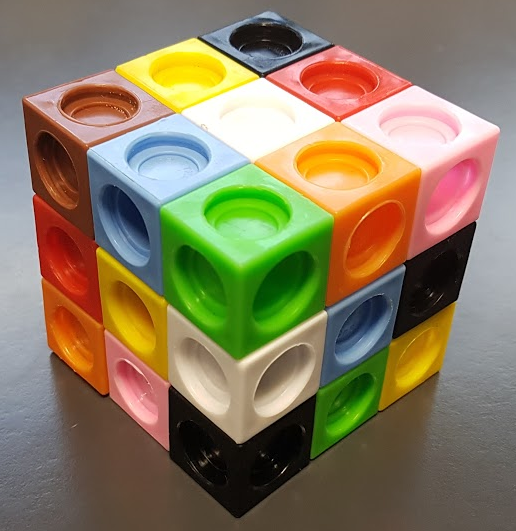Copyright © University of Cambridge. All rights reserved.
'Nine Colours' printed from https://nrich.maths.org/
Show menu
Why do this problem?
This problem challenges students to work in 3 dimensions and to use different representations of the cube. The task is easy to explain (though not so easy to solve). By using cubes or the interactivity, we hope students will become absorbed so that they are willing to think logically, work systematically and persevere.
Possible approach
"On a Rubik's cube, the challenge is to make each face a single colour. Today we're going to do the opposite of that, and build a cube where every face has nine different colours showing."

You may wish to offer students plastic cubes like in this picture.
Alternatively, they could work on squared paper, isometric paper, or on computers using this GeoGebra interactivity.
Give students plenty of time to work on the challenge in pairs. While they are working, listen to their conversations and share with the whole class any useful realisations and noticings (see the Key questions below).
The interactivity could be used as part of a plenary to discuss how to build a solution. It could also be used to explore the relationship between the layered representation and the 3D model of the cube, posing questions such as "If I colour this square on the left, what will change on the right?" and "If I want to colour this cube, where do I need to click on the left?"
Key questions
Some of the 27 cubes have faces that are invisible from the 'outside' of the large cube.
How many cubes have:
one face visible?
two faces visible?
three faces visible?
If one colour appears in a corner, where will the other two cubes of the same colour need to appear?
There will be a cube in the centre. Where else will cubes of that colour need to be positioned?
Possible support
Students could try Creating Cubes first.
Possible extensions